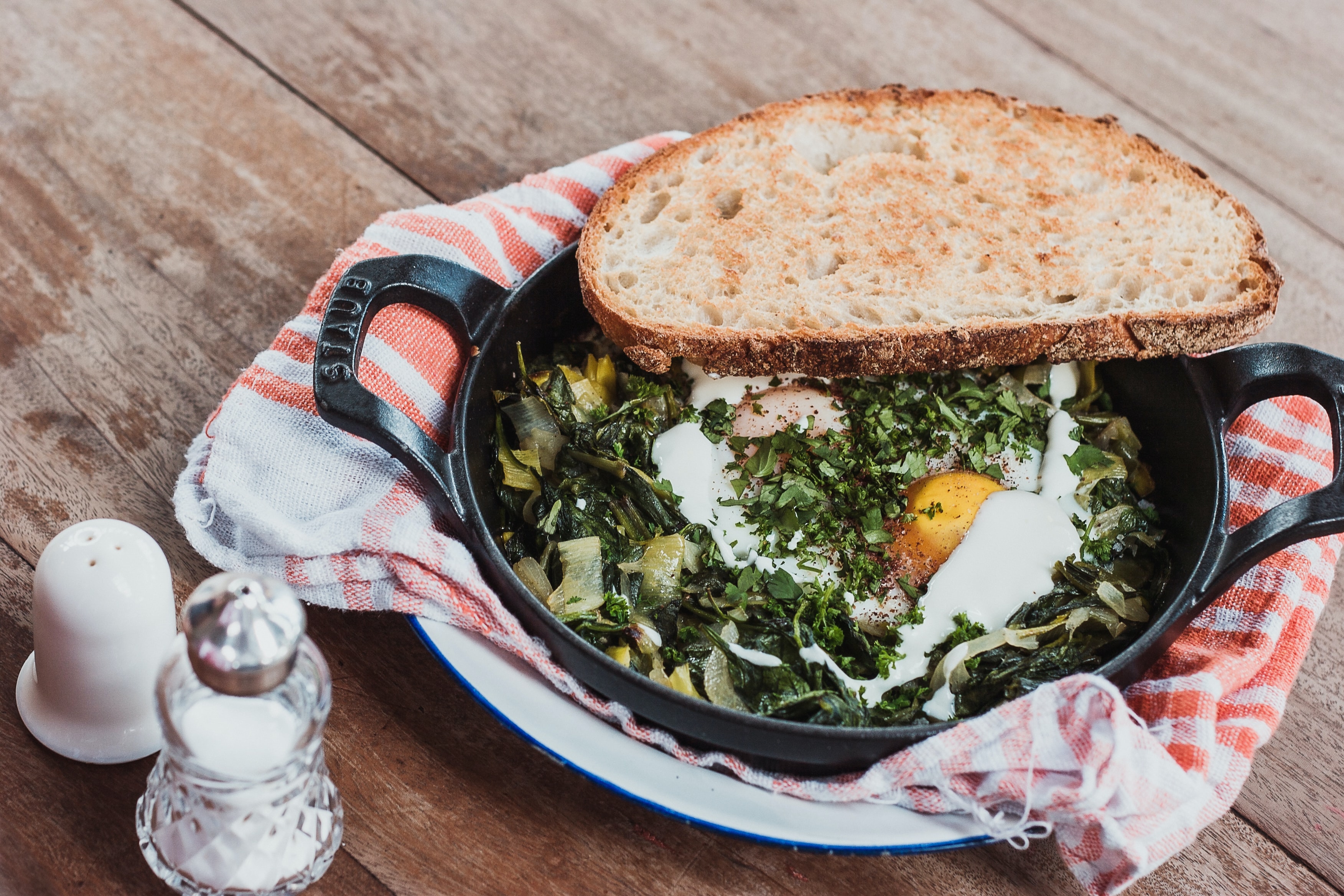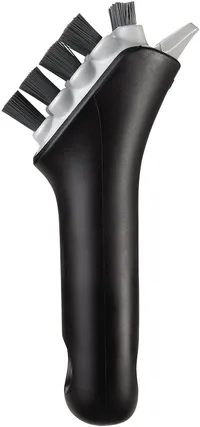How to clean a cast iron skillet – save yours from rust and ruin
This is how to clean a cast iron skillet and stop it from ruin whether you use yours for steak, bacon or vegetables


If you want your best cast iron skillet to last and keep delivering delicious results, knowing how you should clean a cast iron skillet is a must.
Ideal for cooking up juicy steak, bacon, eggs and more, however, cast iron kitchen items do have specific requirements when it comes to cleaning and care. And, if your pan is to remain a kitchen stalwart for years and years to come, you’ll need to know everything about cleaning and seasoning yours properly.
You’re already in the right place to learn how to clean a cast iron pan – just scroll down to get cast iron savvy.
How to clean a cast iron skillet after use
Ideally, you should get cleaning while the pan is still warm. Wipe it with kitchen towel first to get rid of the oil and bits of food left over in the pan. Then all you need to do is rinse it in hot water while cleaning it with a sponge or a brush. These mustn’t be abrasive so metal brushes are out as are abrasive pads.
Rinse, then dry. You can do this with kitchen towel or by putting the pan over a low heat. Once the cast iron pan is dry, use a little kitchen towel to wipe the pan with oil – we’re talking half a teaspoon. Wipe until there isn’t any oil residue leftover. Cool, then store.
The procedure is exactly the same if you’re wondering how to clean a cast iron griddle. Just be aware that if your pan has a ridged surface that creates sear marks, you might need to put a little more effort into the cleaning process because of the design.
Cleaning your skillet with salt
Get small space home decor ideas, celeb inspiration, DIY tips and more, straight to your inbox!
Crusty bits of food left in the bottom of your cast iron skillet after cooking can be stubborn to remove, but salt is the – effective and ready-to-hand – answer. Sprinkle the salt into the skillet while it’s still warm and use kitchen towel to clean it with. When you’re done, empty the pan of salt, rinse and dry with kitchen towel. Done.
Cleaning your cast iron skillet in the oven
You won’t need to do this after everyday use. However, it is part of the process of reviving a rusty pan. Discover what you need to do below.
- Use our complete guide on how to clean a kitchen for helpful tips.
How to clean a cast iron skillet with rust
To remove the rust, use fine steel wool, then wipe the pan out with a cloth. Wash the skillet next, using hot water and some mild dish soap plus a non-abrasive sponge or brush. Dry the pan, then add oil as you would after use (see above).
Finally, with a sheet of aluminium foil on the bottom rack, put the pan upside down on the top rack of the oven and heat it for an hour at 180ºC/350ºF/GM4. Let the pan cool before storage or use.
If you've bought or inherited an old cast iron pan, or neglected yours to the point where it’s developed rust, rest assured that you can save a pan like this with a little effort (and it’s definitely worthwhile). When you're done with the above, finish up by putting the cast iron pan in the oven.

How to clean a cast-iron skillet with burnt-on food
Cooking efforts gone a little awry and your cast iron skillet has burnt-on food? You’ll need a pan scraper to help if this is the problem, but make sure you go for a design that’s made for use with cast iron.
Using one of these may be enough to remove the burnt food from your pan. But if it’s clinging on stubbornly, put a little water in the pan and bring it to a simmer on the heat for three to five minutes then re-try the scraper. As ever, dry the pan and oil it afterwards.
Cleaning a cast iron skillet after cooking bacon
A cast iron skillet is ideal for cooking bacon, but how to clean up afterwards? It’s best to let the bacon fat left in the pan cool a little before putting the grease in the trash. After that you can follow the usual cleaning procedure, above. If you need a little dish soap to help with clean-up after bacon, that’s fine, but make sure you use a small amount.
How to re-season a cast iron skillet
- Dip some paper towel in a couple of tablespoons of oil. Flaxseed and sunflower oil all work fine.
- With the pan over a medium high heat and using tongs, wipe the pan surfaces until the oil smokes and there is no further residue.
- Let the pan cool a little, then repeat three times.
How to not ruin a cast iron pan
- Always hand wash: Never put your cast iron skillet in the dishwasher to clean it.
- Go easy on dish soap: You can use dish soap, but go easy. You just need a little.
- Dry thoroughly: After cleaning, make sure the skillet is completely dry, and never leave it to air dry.
- Don’t use abrasive materials: Using anything too harsh to clean the skillet including metal brushes will do more damage than good.
- Re-season regularly: Oil your skillet or pan lightly each time you’ve used it following our instructions.
Martha Stewart mentions, 'Don’t soak a cast iron skillet overnight' Martha Stewart advises. You should also ‘avoid using steel wool or other harsh materials to clean, as they can also damage the pan,’ she cautions.
Your essentials to clean a cast iron skillet
Shop OXO Good Grips Cast Iron Pan Brush from Amazon
Designed for flat and ridged pans, this brush has a non-slip handle.
Shop Lodge Pan Scrapers from Amazon
Get burnt-on food off your pan without scratching it.
Restored to greatness and ready for cooking up a storm!

Sarah is a freelance journalist and editor writing for websites, national newspapers, and magazines. She’s spent most of her journalistic career specialising in homes – long enough to see fridges become smart, decorating fashions embrace both minimalism and maximalism, and interiors that blur the indoor/outdoor link become a must-have. She loves testing the latest home appliances, revealing the trends in furnishings and fittings for every room, and investigating the benefits, costs and practicalities of home improvement. It's no big surprise that she likes to put what she writes about into practice, and is a serial house revamper. For Realhomes.com, Sarah reviews coffee machines and vacuum cleaners, taking them through their paces at home to give us an honest, real life review and comparison of every model.

